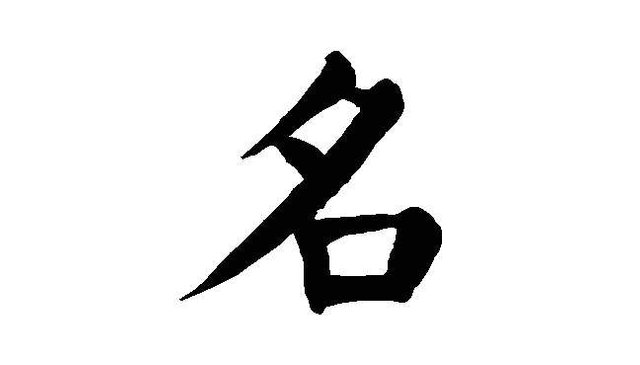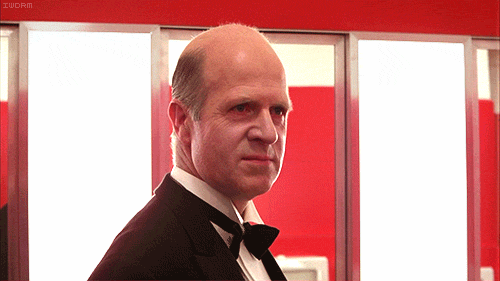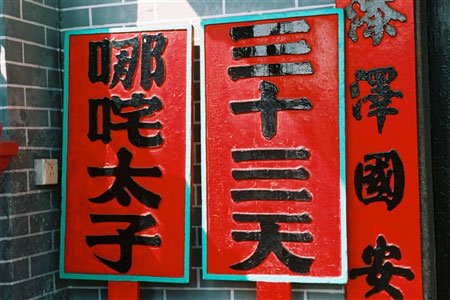Chinese/Japanese stamps - part 1: choosing a name.

Last Saturday I made a short introduction with some photos and now I will make another introduction on how to make a foreign name into a Japanese or Chinese name for making a Chinese stamp.
Choosing a Chinese/Japanese name is one very big topic, and I will not get to the bottom of it... hardly scrape the surface, actually. You will have to read further yourself, but I will provide some of the basics that took me a while to uncover, and also some links. Then you can carry on from there.
Before I begin I guess I should make it clear that I do not speak either language and that the knowledge I am going to present here is what I have gathered over time from books, the internet and talking to people that did know the languages. I have personally treated this name-creating like it was a jigsaw puzzle or a sudoku, and the reaction I have got from Chinese and Japanese people has shown me that this is not entirely wrong. It is possible that I am wrong in some of my assumptions, though. If you know better, please comment and correct me. I would be glad to be ... corrected.

The name you create from your own name could possibly be used in Japan - written on a card and with some katakana help-characters (a phonetic syllable-based alphabet), and the Japanese will probably be delighted to be able to use your own name or as close as they can come. Names in China is a greater problem, and for people who are going there, and want to use the name I suggest consulting Chinese speakers for help. It can be done. I have, by following the most conservative principles, created a name for my wife that corresponded to the phonetic value of her surname, has an elegant character combination, poetic meaning and was evaluated as VERY GOOD by the Chinese she talked to in Beijing. But nothing is OK before it has been thumbed up by someone speaking Chinese (and maybe even that ain't good enough). Also remember: this is actually a tutorial of how to make a stamp that is most likely to be used on drawings or letters - so a pen-name is also a possibility. There is a long tradition for artist to have such pen-names in the east.
Some main principles.
In both languages Chinese characters are used for names. The Japanese have a quite confusing habit of taking in new alphabets without discarding the old ones. But when it comes to something as serious as a name the oldest (and fashionably foreign) Chinese alphabet is used. In Japan the Chinese characters are called kanji.
In both languages the same sound can be represented by different characters with different meaning which gives us the first important thing to consider:
A name can be composed by characters with a double function. A phonetic and a pictorial.This is one of the fascinating aspects of the name-making. In Japanese: the name of composer Toru Takemitsu (that I presented in this post :) - is composed of the Chinese characters meaning thorough, Military, and Man. This could of course be likened to western names like Smith or Baker, but remember that Japanese and Chinese has almost nothing in common as languages go, and therefore the use of Chinese characters add another dimension to the name.
Chinese names
Chinese names are very hard to get right. They are always composed by two or three characters. The family name goes first, and is always only one character. After that a given name in one or two characters. A very difficult thing with Chinese family-names is that there are so few. Most Chinese have a name from the list of The old hundred families. That is really few names for one billion people! Also if your phonetic name does not have a syllable that correspond with the 100-list, you should examine if the syllable is at all possible to pronounce in mandarin. There is also many other things to consider: horoscopes, could the name somehow sound like something ridiculous? rhythm, poesy and much more. I will not go further into this jungle, but I will provide you with these great links:

Japanese names
Contrary to the Chinese that will prefer to give you a whole new Chinese name, the Japanese write foreign words phonetically. That mean that your real name can come in use, as long as you remember that Japanese is different from western languages, especially in one point: All words are composed by syllables that contains both a consonant and a vowel. From this follows that they will add a vowel between every consonant , which can make the name sound a bit strange if there is a grouping of consonants. Listen to this guy explain how to pronounce McDonald. A name like Frank will be Japanified to Furanku (Fu-ran-ku - フランク- notice that the katakana n (ン ) can stand alone, but you have to have a vowel in the end). If you are German this must be most problematic - take a name like Schmidt for example... shi-mi-du-to maybe?
I have not found any Japanese sites as good as the Chinese Yellowbridge, but I have a book that I bought many years ago when travelling in Japan (see the front-cover in the post from last Saturday).. And I will use a couple of photos I have taken from the book.
If we continue with Frank and focus on the first syllable FU we can see that the sound covers many different signs.

I will go through them all. If they have a meaning like bad, enemy, misfortune, crap or pee I will of course avoid them, and keep looking for something better. I have chosen an example below meaning wind. Kaze (like in kamikaze, Godly wind) in Japanese - Fēng in Chinese, but with the old chinese sound FU kept in Japanese. This could be the first - kanji - Chinese character in the name. Next we have to do the same with the other syllables. But notice that the meaning of the following Kanji should somehow relate in a poetic way to wind.

There is one thousand thing more that I could mention, but I guess that this has to end somehow. The Japanese on-line name-translators is better than the Chinese, mostly because the Japanese language is more adaptable to western languages with its clear syllables. Chinese have a much more limited number of syllables and depend much more on intonation, which also make it so beautifully melodious to listen to. Take a look at these links:
Last I will mention that many western artists create stamps with Latin or Cyrillic letters - and that can look quite spiffy too. Here is an example of an oriental style stamp design by the Russian artist Denis Pakowacz:

And thus, three hours of Saturday evening disappeared... Hope you like it - I'm devastated. Next time I will make some practical examples, and then let's see if I can find time next Saturday to take the next step... because to make a stamp we will not use the Chinese modern characters to anything - we will have to find the ancient iron-age script known as seal-script and then at last we can begin to design.
What a really interesting post, thank you :-)
Cg
You like it, what a pleasure! This is without doubt the most complex text I have written here on Steemit, so it saddened me that it was uncommented. I mean to go on with this project, and the next instalment should be more manageable. I though about asking two user if I could design a stamp name for them and use as an example. The Finnish artist Mikki Lyytinen was the first with his real name, maybe I could use your Cryptogee psydonym as the second if you are interested. You were after all the only one commenting...